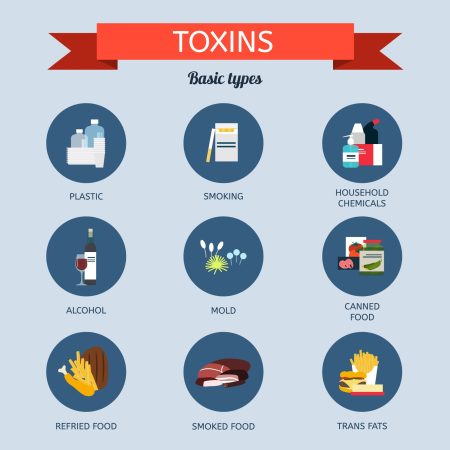How bad IS high fructose corn syrup?
Understanding High Fructose Corn Syrup
High fructose corn syrup, commonly known as HFCS, has become ubiquitous in our modern food supply since its introduction in the 1970s. This sweetener is found in a wide variety of foods and beverages, often in places you might not expect. As HFCS consumption has risen dramatically, so have rates of obesity, diabetes, and other metabolic disorders. While correlation doesn’t equal causation, growing scientific evidence suggests that excessive consumption of HFCS can lead to liver dysfunction, insulin resistance, obesity, and cardiovascular disease.
Obvious Sources In Your Diet
Soft drinks: Regular soda is perhaps the single largest source of HFCS in the American diet. A typical 20-ounce bottle contains about 16 teaspoons of HFCS.
Fruit drinks and punches: Most non-100% fruit juices contain HFCS as their primary sweetener.
Sweet baked goods: Commercial cakes, cookies, and pastries frequently contain HFCS.
Candy: Many mass-produced candies use HFCS as their main sweetener.
Sweetened dairy products: Flavored yogurts, ice cream, and frozen yogurt often contain HFCS.
Breakfast cereals: Many cereals, particularly those marketed to children, contain significant amounts of HFCS.
Energy drinks and sports beverages: These often contain HFCS along with other sweeteners.
Hidden Sources In Your Diet
Bread and baked goods: HFCS helps achieve consistent browning and extends shelf life. Even savory breads often contain it.
Condiments and sauces: Ketchup, barbecue sauce, mayonnaise, salad dressings, pasta sauces, and even steak sauce often contain HFCS.
Canned foods: HFCS is frequently added to canned fruits, beans, and soups.
Processed meats: Some lunch meats, bacon, and sausages contain HFCS as a flavor enhancer and preservative.
Frozen meals: Many ready-to-heat meals include HFCS in their sauces.
Granola and protein bars: Despite a “healthy” image, many contain HFCS.
Peanut butter and jams: Most commercial varieties include HFCS.
Crackers and savory snacks: Even salty snacks may contain HFCS.
Cough syrups and liquid medications: HFCS is often used to improve palatability.
Vitamins and supplements: Chewable and liquid vitamins frequently contain HFCS.
Restaurant foods: Many chain restaurants use HFCS in sauces, marinades, and dressings.
“Health foods”: Products marketing themselves as “natural” may still contain HFCS.
Looking to flush out toxins for a more fresh and vibrant you? Join our Guided Spring Liver Cleanse now ↓
Steps to Reduce HFCS Intake
If you’re concerned about HFCS consumption,here are some practical strategies to reduce your intake:
- Read labels carefully: Check ingredient lists for “high fructose corn syrup,” “corn syrup,” or “corn syrup solids.”
- Prepare more homemade foods: Cook from scratch using whole ingredients whenever possible.
- Choose whole, unprocessed foods: Fresh fruits, vegetables, whole grains, and unprocessed proteins rarely contain HFCS.
- Select beverages wisely: Replace soft drinks and sweetened beverages with water, unsweetened tea, or coffee.
- Find alternative brands: Many companies now offer HFCS-free versions of popular products.
- Be cautious with “natural” claims: These don’t guarantee absence of HFCS.
- Consider traditional sweeteners in moderation: Honey, maple syrup, or even regular sugar may be preferable to HFCS, though all sweeteners should be consumed in limited amounts.
- Be especially vigilant with children’s foods: Many products marketed to children contain high levels of HFCS.
High fructose corn syrup has become deeply embedded in our modern food supply. To improve our health, we can take conscious steps to reduce or eliminate HFCS from our diet by being aware of where it hides in our food and making more informed choices.
Ever feel like your body could use a reset?
As we become more mindful of our diet, spring is the perfect time for renewal and detoxification. We’re excited to share that our Guided Spring Cleanse launched on March 17th in our Herbal Answers® app!
According to ancient herbal traditions, spring is the time of the liver and gallbladder. Traditionally, cleanses were always guided by the local herbalist and were an important part of community living. These purification practices have been an integral part of society around the globe for more than 2000 years. When done safely, purification can be a wonderful way to reset your body and reduce toxicity burden.
Even though we’re already a few weeks in, it’s not too late to join and start reaping the benefits. Our community is growing and thriving, and we’d love for you to be a part of it.
Using our Herbal Answers® app is the perfect way to join our seasonal guided cleanses and take the first step towards a healthier, happier life. 😊

Have you taken the toxicity survey?
Our bodies accumulate things like the pipes in your house. And just like the pipes in your house, it’s a good idea to clean them out from time to time to reduce build up. If you want more information on if you could benefit from a cleanse, click the button below to take the toxicity survey!


